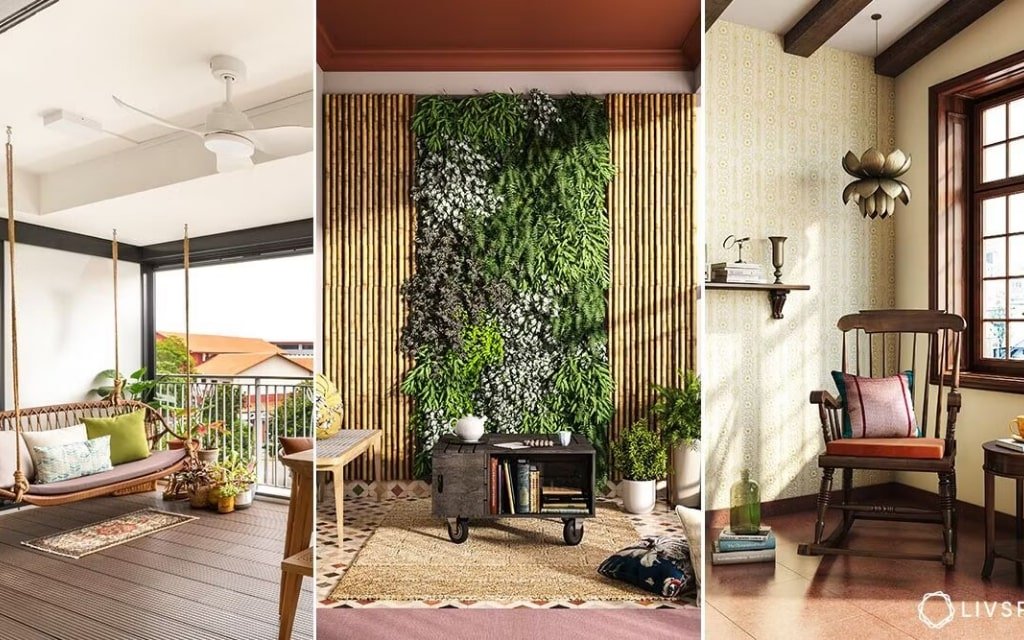The interior design sector has reacted by incorporating eco-friendly practices as sustainability and environmental consciousness continue to gather traction. Due to their potential to construct stunning and useful places while minimizing their negative effects on the environment, green materials and products have gained substantial attention from designers, homeowners, and businesses..

. In this article, we’ll delve into the realm of eco-friendly products and materials, highlighting their advantages and going through the numerous alternatives for environmentally friendly interior design.
Reclaimed and Recycled Materials: One of the key principles of sustainable interior design is the use of reclaimed and recycled materials. These materials not only reduce waste but also add a unique charm and character to spaces. Reclaimed wood, for example, can be repurposed into flooring, furniture, or accent pieces, creating a rustic and eco-friendly aesthetic. Additionally, recycled glass can be transformed into stunning countertops or decorative tiles, offering a visually appealing alternative to traditional materials.
Natural and Organic Fabrics: Choosing natural and organic fabrics for upholstery, drapery, and bedding is another way to incorporate eco-friendly choices into interior design. Fabrics made from sustainable sources such as organic cotton, hemp, or bamboo are free from harmful chemicals, pesticides, and synthetic dyes. These materials not only contribute to a healthier indoor environment but also support ethical farming practices and reduce the carbon footprint of the textile industry.
Low VOC Paints and Finishes: Volatile Organic Compounds (VOCs) are chemicals found in many conventional paints and finishes, which can release harmful gasses into the air, contributing to poor indoor air quality. Opting for low VOC or zero VOC paints and finishes reduces exposure to toxins, promoting a healthier living environment. These eco-friendly alternatives are available in a wide range of colors and finishes, allowing for creative and sustainable design solutions.
Energy-Efficient Lighting: Energy-efficient lighting options are a crucial aspect of sustainable interior design. LED lights, for instance, consume significantly less energy than traditional incandescent bulbs, resulting in reduced energy consumption and lower electricity bills. Moreover, LED lights have a longer lifespan, reducing waste generated from frequent bulb replacements. Incorporating natural light through well-placed windows, skylights, and light tubes is another way to minimize the reliance on artificial lighting, creating an inviting and sustainable space.
Sustainable Flooring: Flooring choices play a significant role in creating eco-friendly interiors. Several sustainable options are available, such as bamboo, cork, reclaimed wood, or recycled rubber. Bamboo, for instance, is a fast-growing renewable resource that can be harvested without harming the plant, making it an excellent alternative to traditional hardwood flooring. Cork is another sustainable choice, as it is harvested from the bark of the cork oak tree, allowing the tree to regenerate. These flooring options not only offer durability and aesthetics but also contribute to a greener and healthier environment.
We can build beautiful, useful spaces while minimizing our environmental impact by embracing green materials and goods. We may encourage a more sustainable and ecologically conscious approach to interior design by combining recycled materials, natural and organic fabrics, low VOC paints and finishes, energy-efficient lighting, and sustainable flooring. It is now simpler than ever to design rooms that are both visually beautiful and environmentally responsible because to the market’s expanding selection of eco-friendly options. Take advantage of green design’s potential and help the environment one interior at a time.


